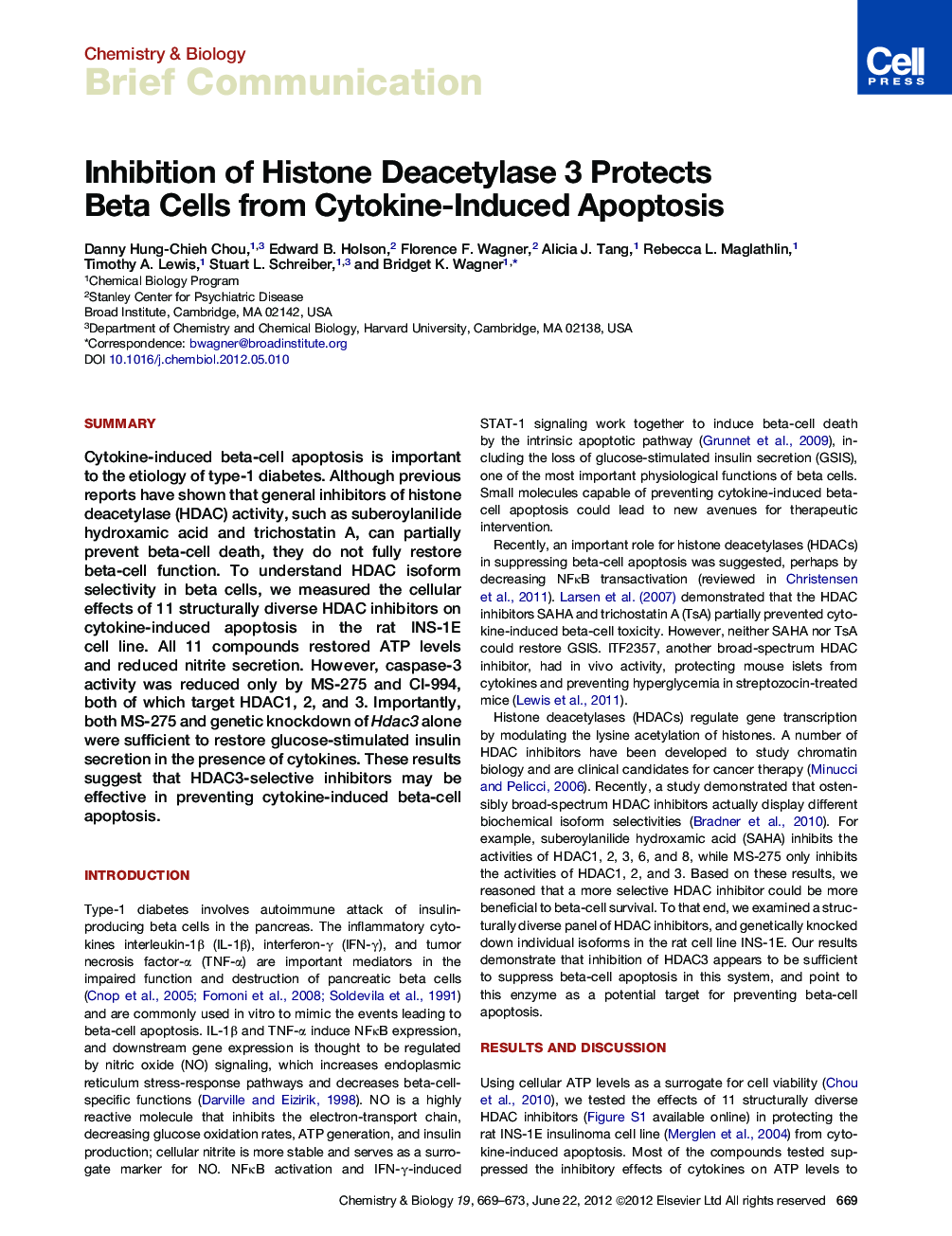| Article ID | Journal | Published Year | Pages | File Type |
|---|---|---|---|---|
| 1391285 | Chemistry & Biology | 2012 | 5 Pages |
SummaryCytokine-induced beta-cell apoptosis is important to the etiology of type-1 diabetes. Although previous reports have shown that general inhibitors of histone deacetylase (HDAC) activity, such as suberoylanilide hydroxamic acid and trichostatin A, can partially prevent beta-cell death, they do not fully restore beta-cell function. To understand HDAC isoform selectivity in beta cells, we measured the cellular effects of 11 structurally diverse HDAC inhibitors on cytokine-induced apoptosis in the rat INS-1E cell line. All 11 compounds restored ATP levels and reduced nitrite secretion. However, caspase-3 activity was reduced only by MS-275 and CI-994, both of which target HDAC1, 2, and 3. Importantly, both MS-275 and genetic knockdown of Hdac3 alone were sufficient to restore glucose-stimulated insulin secretion in the presence of cytokines. These results suggest that HDAC3-selective inhibitors may be effective in preventing cytokine-induced beta-cell apoptosis.
► Broad-spectrum HDAC inhibitors partially suppress cytokine-induced beta-cell death ► Inhibitors selective for HDAC1, 2, and 3 are most effective in suppressing apoptosis ► Genetic knockdown of HDAC3 suppresses beta-cell death and restores insulin secretion
